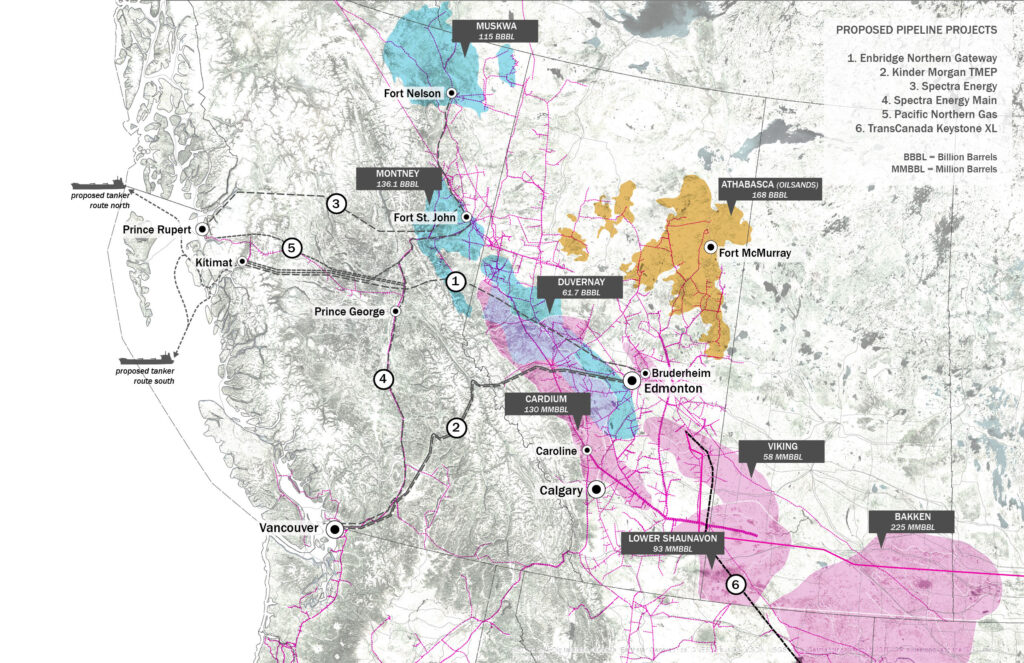
In the last decades the demand for energy has increased substantially. Already, growing energy demands are already producing wholly new ‘energy landscapes’. On the one hand, we can see a rapid increase in the extraction of ‘unconventional’ fossil fuels such as shale gas (through hydraulic fracking) and oil sands. On the other, there is a significant growth in the implementation of renewable energy projects, including offshore wind farms, solar fields and biofuels. To date, the complex social, cultural, environmental, and spatial conditions that are the result of the exploitation of these resources are not very well documented, let alone made available in a comprehensive and accessible, yet visually engaging format. This research addresses this blind spot by examining Canada’s Carbon Corridor — a vast network of major oil, gas, coal, and mining projects across British Columbia and Alberta. The multiplicity of energy landscapes represented within this corridor provides a unique case study through which we can begin to understand the physical form and function of landscapes resulting from the extraction of non-renewable fossil fuels. By literally drawing out the complex interrelationships of energy developments with water, waste, and mobility networks as well as social, cultural and geopolitical issues, the research seeks to provide novel ways for the way planners, designers, and policy-makers from all levels of government understand and approach these landscapes.
Collaborators
Lőrinc Vass, Arron Griffioen.